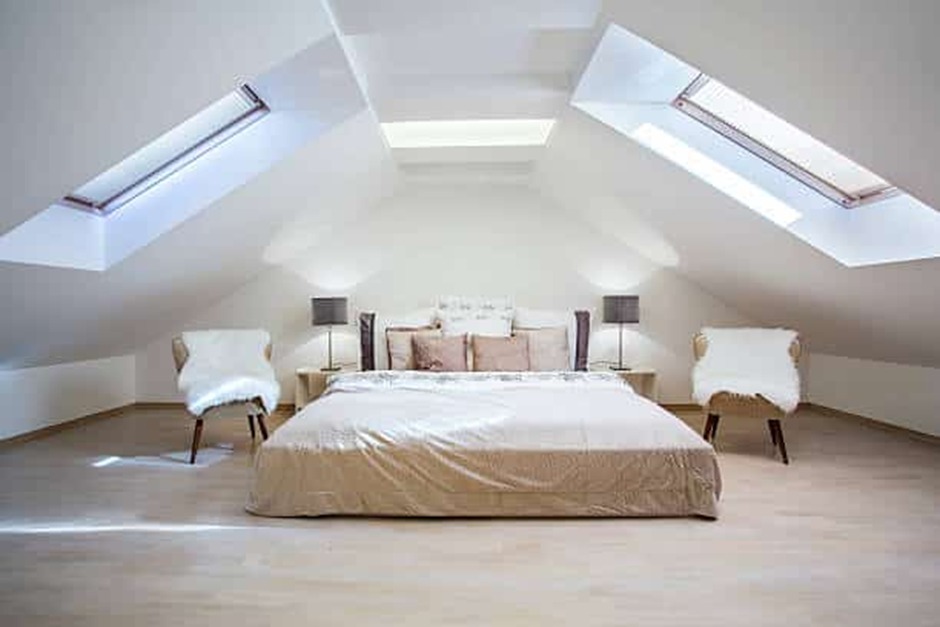Homeowners planning a loft conversion or house extension should consider the building regulations. Building regulations are essential for every building’s design, construction, and changes. These legal criteria guarantee the structural integrity and security of your home.
Is building regulations approval needed for a loft conversion?
If you’re considering a loft conversion, you need to apply for building regulations approval. For most house extension works, building regulation approval is necessary. You need permission from the building authority to turn a loft or attic into a usable living area. Building regulations approval can guarantee things like:
The integrity of the building, including the current roof, is not jeopardized by the structural strength of the new level,
Allowing for a safe escape from fire.
Acceptable sound insulation between the rooms below and the conversion, with safely engineered stairs to the new floor.
Your loft conversion project can operate more smoothly with the assistance of a planning specialist. Get a quote or a free consultation by calling 079 4609 6932.
What loft conversion building regulations should I take into account?
To guarantee that the project conforms with building standards and that you are granted approval, our builder, architect, or loft conversion specialist will assist in preparing building regulations drawings, structural specifications, and calculations. Here are some of the common regulations you need to keep in mind-
Fire safety regulations
According to fire regulations, the new floor joists in your loft conversion must provide at least 30 minutes of fire protection, which could require replastering the ceilings in the rooms below. The building regulations for loft conversions include fire safety as a significant component; therefore, an expert builder should be familiar with the laws.
A fire door must be placed at the top or bottom of the new staircase to divide the loft area.
Existing doors on the stairway to the ground and first floors must offer 20 minutes of fire resistance and cannot be glazed (unless the glass is fire-rated).
Every home floor must have mains-powered smoke alarms connected to the mainline so that they all trigger when one does.
You should ensure that your walls are fire-resistant to minimize damage in the case of a fire.
Sprinklers are a security measure but are not required by building regulations.
Windows
You must ensure that windows are fire-safe. Egress window openings will be required to service all first-floor habitable rooms (not bathrooms) since new windows must be large enough to escape a fire. The holes must be at least 0.33m2 and 450mm x 450mm in size. Rooflights’ bottom apertures, often top openings, should be 800 to 1,100 millimetres from the ground. You should have enough insulation from your glazing, and you may check the U values of the windows you are considering to learn more about heat retention.
Stairs Regulations
If your loft conversion adds a third level, you should ensure that a safe stair enclosure descends to the outdoor escape door. You have a few alternatives if your staircase rises from a room other than the hallway.
Keep the staircase inside a corridor that leads to an exterior entrance or.
At the foot of the entrance, enclose the stairs inside a lobby. There should be two entrances in the foyer that allow for either a front or a back exit. The lobby walls and doors have to be fireproof.
Every step on your staircase must have the same height and length, with a minimum of 150mm and a maximum of 220mm for length and a minimum of 223mm and a maximum of 320mm for height. Even though homeowners rarely need to go past 14 stairs, you can only have up to 16 stairs.
Floor and Beams
The weight of the additional room will often require new floor joists to be supported. To comply with building regulations, more joists must be installed. Hire a structural engineer to determine the minimum distance between joists to carry the expected load weight. They have to indicate the size and grade of joists required in collaboration with the constructor you’ve picked. The new joists will span between load-bearing walls parallel to the old ones. Another thing to remember is that to aid with sound insulation, laws will require that you have at least 100mm of insulation between the joist
Wall construction
In areas where existing supports are being eliminated, new walls must efficiently support both old and new roof structures.
Bathroom
When adding a bathroom, ventilation, plumbing, and electrical construction codes should be considered. You should ensure that “Document H,” which deals with drainage and trash disposal, is followed in your project. The secret to doing this is to work with a licensed plumber who can make sure your system complies.
Electricity
Your new electrical system must follow the 17th Edition Electrical Regulations and Part P of the Building Regulations. Suppose the present unit doesn’t have the requisite capacity. In that case, installing a new consumer unit or additional units may occasionally be necessary. To plan where your lights and plug outlets will be before construction starts, ask your architect or another specialist to produce a room data sheet. To guarantee that you can receive the required certificate after the work is over, use a competent electrician for the project.
Walls and roofing
You should ensure your loft conversion has at least 2.2 meters of head height and has appropriate insulation in the walls and ceiling.
Thermal insulation
There are two options to satisfy the building rules’ criteria for insulation in your new space: cold or warm. Your building control inspector will specify your required one.
Party Wall Agreement
The Party Wall Act 1996 must be followed if you reside in a semi-detached or terraced home. Learn more about Party wall agreement here.
Loft Conversion Building Regulations


How to apply for building regulations approval
To apply for building regulations approval, you must first choose whether you will engage a local authority inspector from your local council, run through Local Authority Building Control (LABC), or an ‘approved inspector’.
An approved inspector should be registered with the Construction Industry Council. They can offer recommendations, evaluate the data provided by your architect, builder, structural engineer, etc., and, in the end, give a certificate verifying that the work conforms with building regulations. If you’ve chosen to employ an approved inspector, take a seat; they’ve got this. However, you must apply to your council if you’re utilizing your local authority and managing this stage on your own. You can submit your project for approval immediately to the building control department of the majority of local authorities to receive a completion certificate (just like you would from a certified inspector). Learn more at how to get approval.
Two methods exist for applying for a local authority inspector’s approval under the building regulations:
Full plan submission
Most loft conversions require ‘Full plan’ submission. You must offer comprehensive blueprints and data on the proposed works, including sketches of their structural components. This is the finest option for new construction, elaborate extensions, and renovation projects. Remember that it usually takes 8 weeks for the local authorities to approve complete plan applications.
Building Notice
You can start working immediately using a building notice. You only need to notify building control, along with the address and a description of the work, at least 48 hours before you want to begin the job. No elaborate planning is required, and construction can start immediately because it only takes five days to complete. Ask your council whether one is best for your project if you’re undertaking modest work.
Address: 31 Goodmayes Road, Essex, IG3 9UH
Email: info@xlinearchitecture.co.uk
Phone: 020 8050 9695


Mobile: 079 4609 6932
Registered in England No. 12481695
